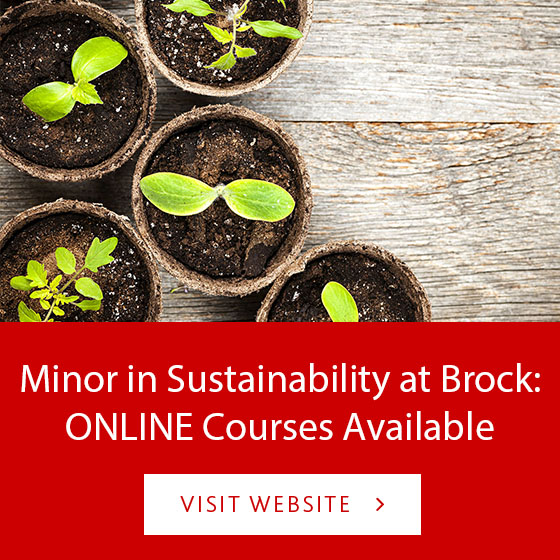For the first time in two years, students enrolled in the Master of Sustainability program at Brock University were able to get together for an in-person field trip across the Niagara Region to engage with our community partners at the Niagara Parks Commission.
The day began at the newly restored and renovated Niagara Power Station, where SSAS students Tyler Thomson and Lauren Patterson presented their final project in their Problem Solving in the Environment course (SSAS 5P03) on behalf of their classmates. As SSAS 5P03 instructor Dr. Ryan Plummer explained, the purpose of the assignment was to “collaboratively understand and resolve an environmental sustainability dilemma or opportunity. Niagara Parks was the client for the course this year and expressed an interest in proposals regarding communications and interpretation”. Dr. Plummer added that “the Niagara Parks Power Station provided an impressive backdrop for the students to present the final deliverables of their project to Ellen Savoia (Senior Manager, Planning and Environmental Sustainability), Corey Burant (Project Manager, Forest Health Planning, Environment and Culture) and colleagues from the ESRC”.
After the presentation, the students were taken on a tour of the Niagara Power Station building that included a history of the power station from its initial construction in 1905 to today. The tour included multiple displays that covered various aspects of the station’s history, including a look at how the building was constructed with horse and carriage power. We were incredibly grateful to our tour guides for providing such a thorough history of such a fascinating aspect of the Niagara Region!
From the Power Station, we stopped for a lunch break at Table Rock Market and headed out for the second half of our day, which was a tour of various Niagara Parks stewardship sites. Our first site was the Upper Whirlpool Woods, where Corey Burant spoke about trail management in the Niagara Parks Commission, and how the NPC manages at-risk species and old growth forests. The students then had the opportunity to meet and hear from SSAS alumnus Samantha Witkowski, whose thesis research was based in several Niagara Parks stewardship sites, including the Niagara Glen, and concerned evaluation of environmental management. Hearing from a former SSAS student whose thesis research has been published in several journals since completing the program was a valuable experience for our current students, many of whom will be starting to collect data for their own research projects.
Following Samantha’s presentation, the students headed to the final two stops on their field trip. The first of these was the Usshers Creek Coastal Wetland Project site, where Corey Burant spoke to the students about the project and explained how the Niagara Parks Commission manages coastal wetlands in their stewardship sites. The final stop of the day was the Chippawa Battlefield, where Corey spoke to the students about the NPC’s Grassland Habitat Restoration Project. The students learned about the history of the site and how the NPC is using controlled burning to maintain the site and restore natural habitats.
This experience was incredibly valuable for all students, as it provided them with the opportunity to not only meet many of their fellow classmates in person, but to visit the stewardship sites that so many of them are basing their research around. Lauren Patterson, who is currently completing a research assistantship with the Niagara Parks Commission, said that “visiting prominent Niagara Parks sites and seeing their beauty in person for the first time was a reminder of why we are studying Sustainability; We want to continue to experience areas filled with cultural and natural heritage, and safeguard them for future generations”. SSAS student Shannon Heaney, who travelled from Alberta to participate in the field trip, echoed Lauren’s statements, and added that “seeing the work that Niagara Parks is doing is inspiring for the future of sustainability and the beautiful natural areas in which these actions take place”.
Check out the photos below of some highlights from our trip!









